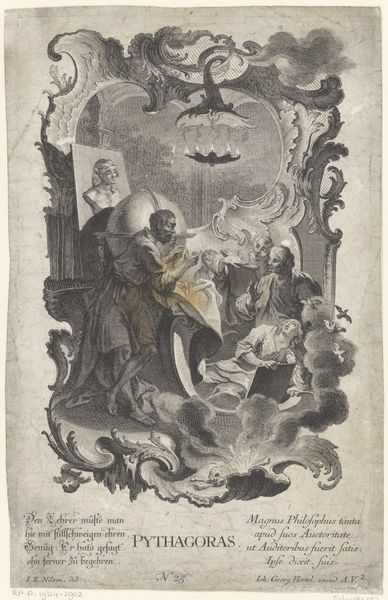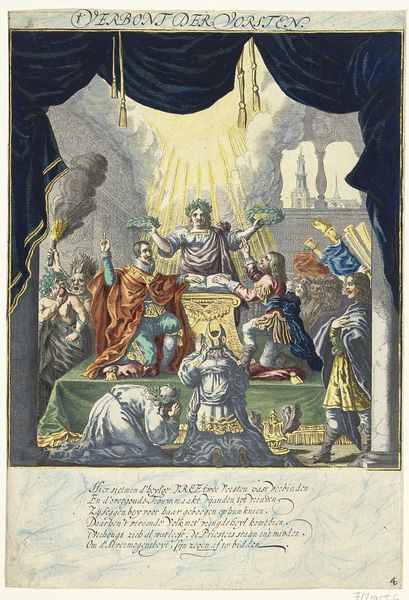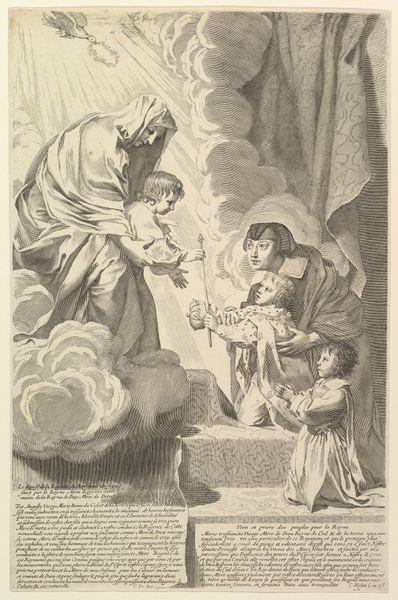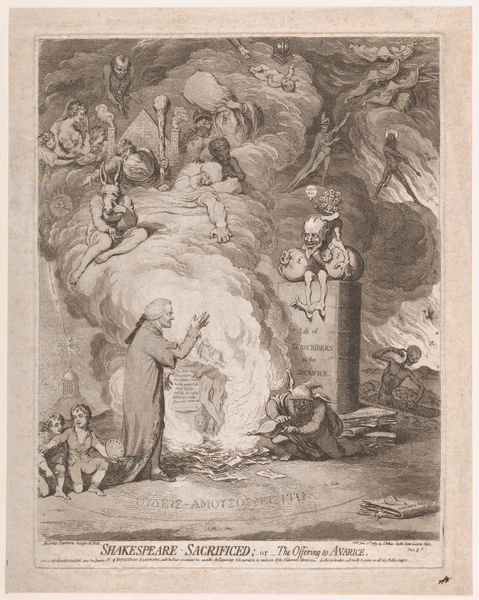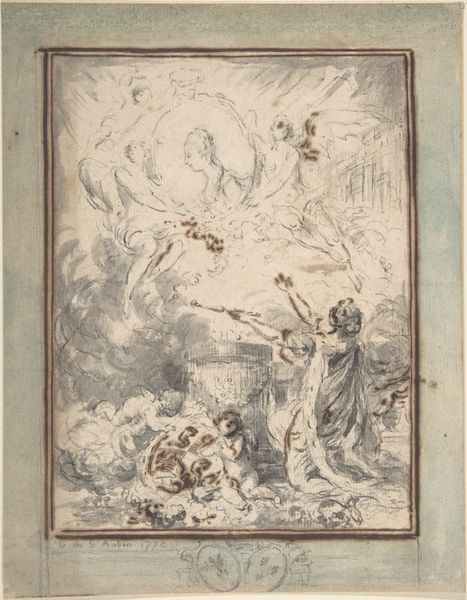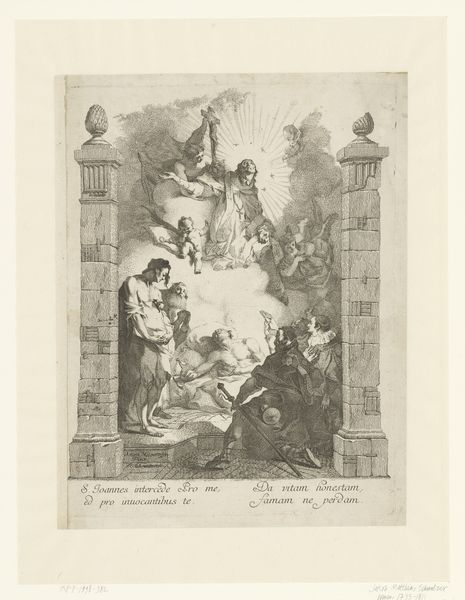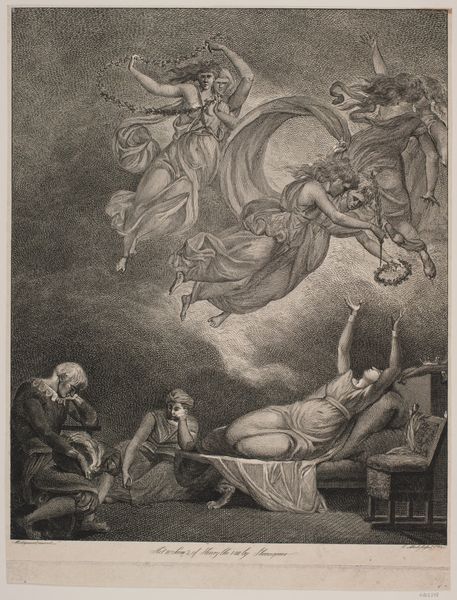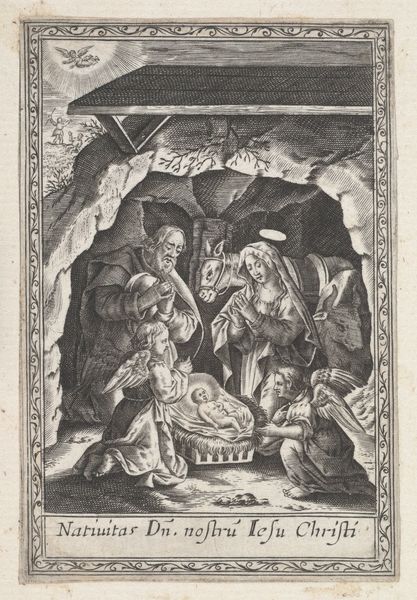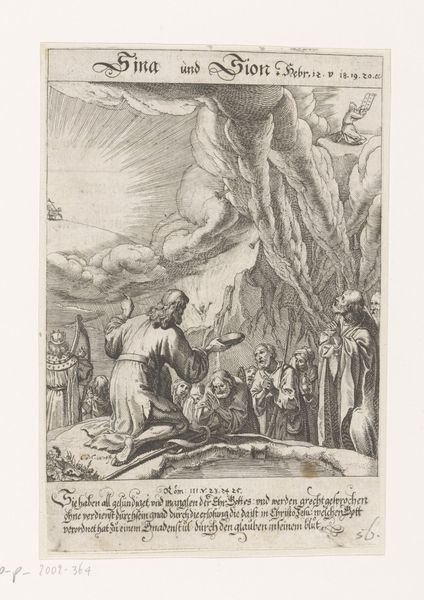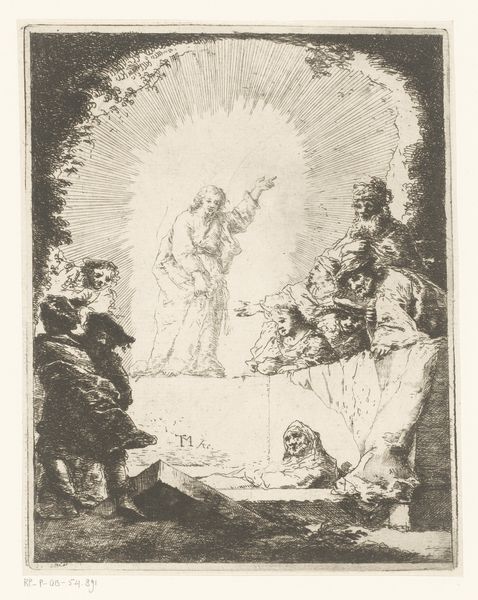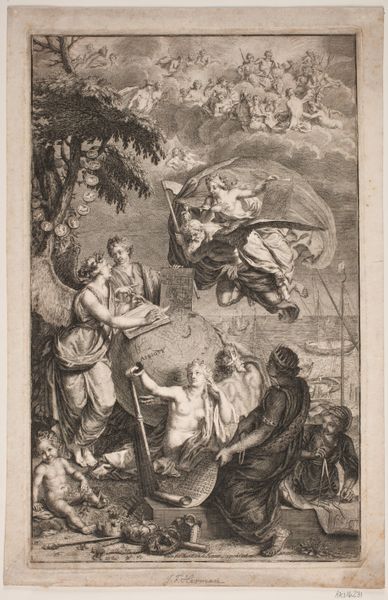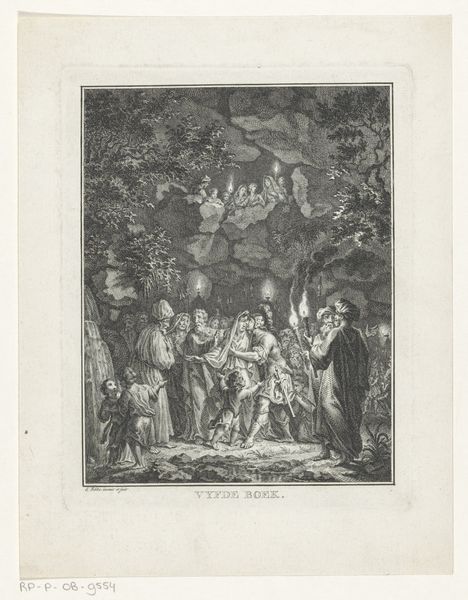
A Phantasmagoria; — Scene – Conjuring-Up an Armed-Skeleton 1803
0:00
0:00
drawing, coloured-pencil, print, etching
#
drawing
#
coloured-pencil
#
water colours
# print
#
etching
#
caricature
#
coloured pencil
#
romanticism
#
history-painting
#
watercolor
Dimensions: sheet: 13 7/8 x 10 in. (35.3 x 25.4 cm)
Copyright: Public Domain
Curator: Look at this curious scene, "A Phantasmagoria; — Scene – Conjuring-Up an Armed-Skeleton," crafted by James Gillray in 1803. What jumps out at you? Editor: Immediately, a feeling of strange theater, a gothic pantomime unfolds. The palette—smoky greens and muted reds—contributes to the drama. The sheer *number* of elements suggests this must be overflowing with satire. Curator: Absolutely, Gillray’s satires were savage critiques, etched with precision and imbued with allegorical flair. Notice the way the figures, conjurers of sorts, huddle around a bubbling cauldron... but what do you suppose they intend to evoke? Editor: Well, seeing all the frantic energy and the obvious manipulation—all the little coins spilling out of a heavy pot—I imagine it's about manufactured frenzy for financial gain. How wealth corrupts ritual and vice versa, wouldn't you say? What does all this labor produce? Curator: Quite possibly. Consider the armed skeleton hovering above, bearing a tarnished crown and shield. Perhaps Gillray is commenting on the transient nature of power, suggesting war and authority, like all else, ultimately dissolve into bone? He made both etchings and used colored pencil in it; perhaps the drawing itself mimics the alchemical process, turning base sentiments into golden commentary. Editor: I see. So he makes use of accessible and portable materials—pencil, ink, paper—for an immediate reach with mass-produced, acid-etched lines. He renders commentary *efficiently*, the labor minimized, the political thrust maximized, aiming right at public opinion. Think of the power of this for his contemporary audience! Curator: The way that history folds back on itself... Do you see a hint of present-day events foreshadowed here too, as the manipulations persist, taking ever newer forms? I’d say that maybe art endures most brilliantly not by offering answers, but by prompting us to eternally ask these critical questions. Editor: True— and that such 'high' subjects get communicated via very basic and democratized materials is so vital here. By foregrounding materials and methods, this art allows us to interrogate how systems of labor contribute to social beliefs and values in complex, fascinating ways.
Comments
No comments
Be the first to comment and join the conversation on the ultimate creative platform.
